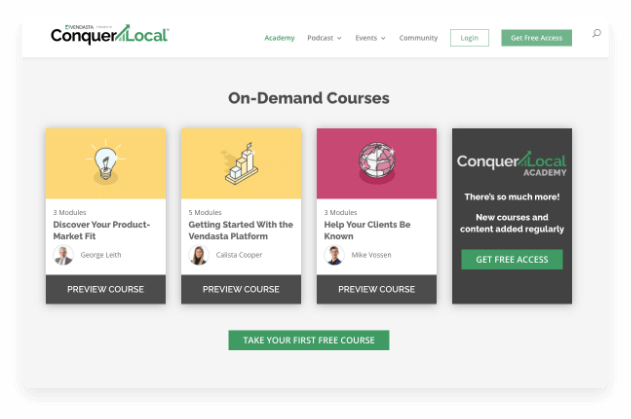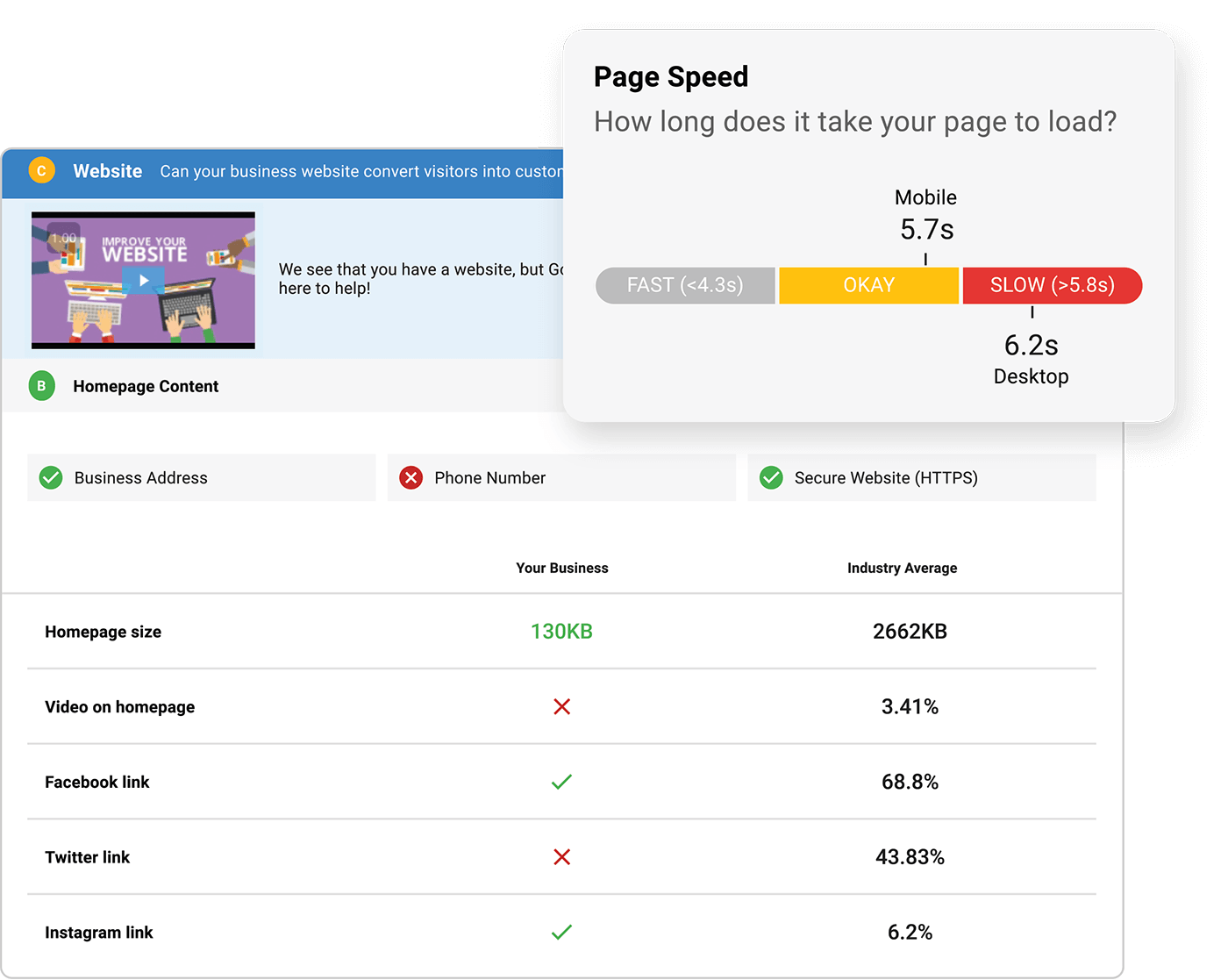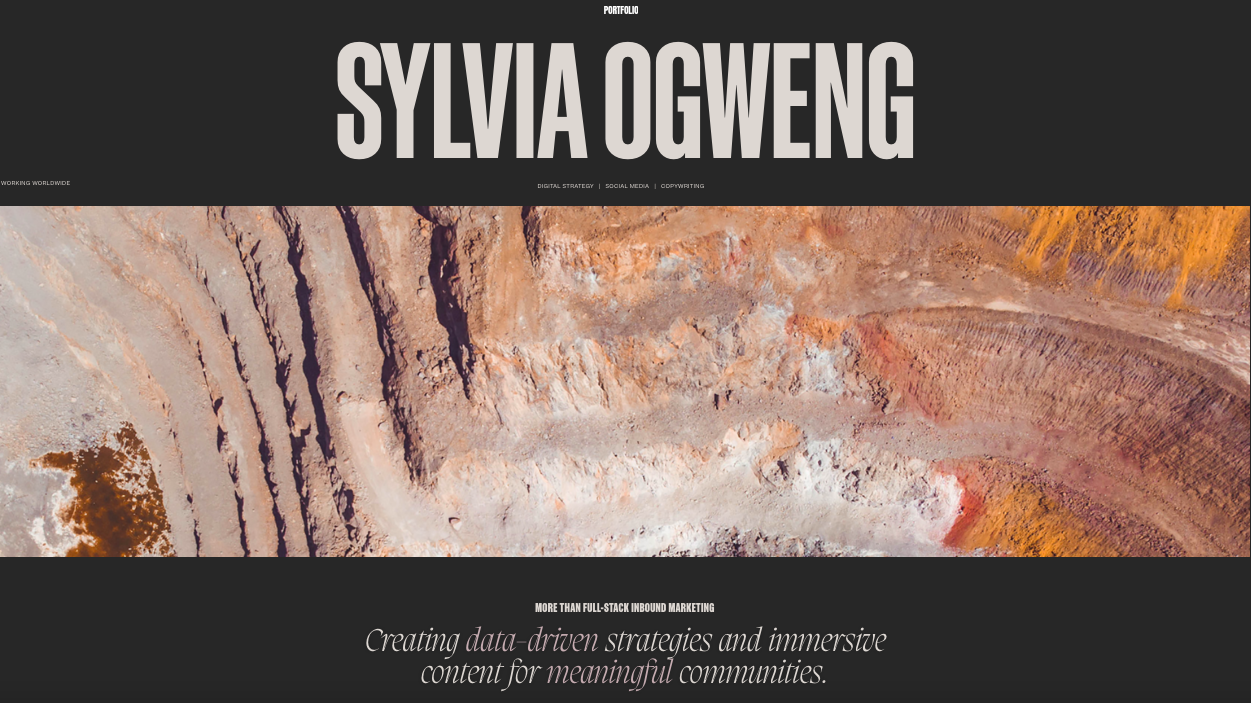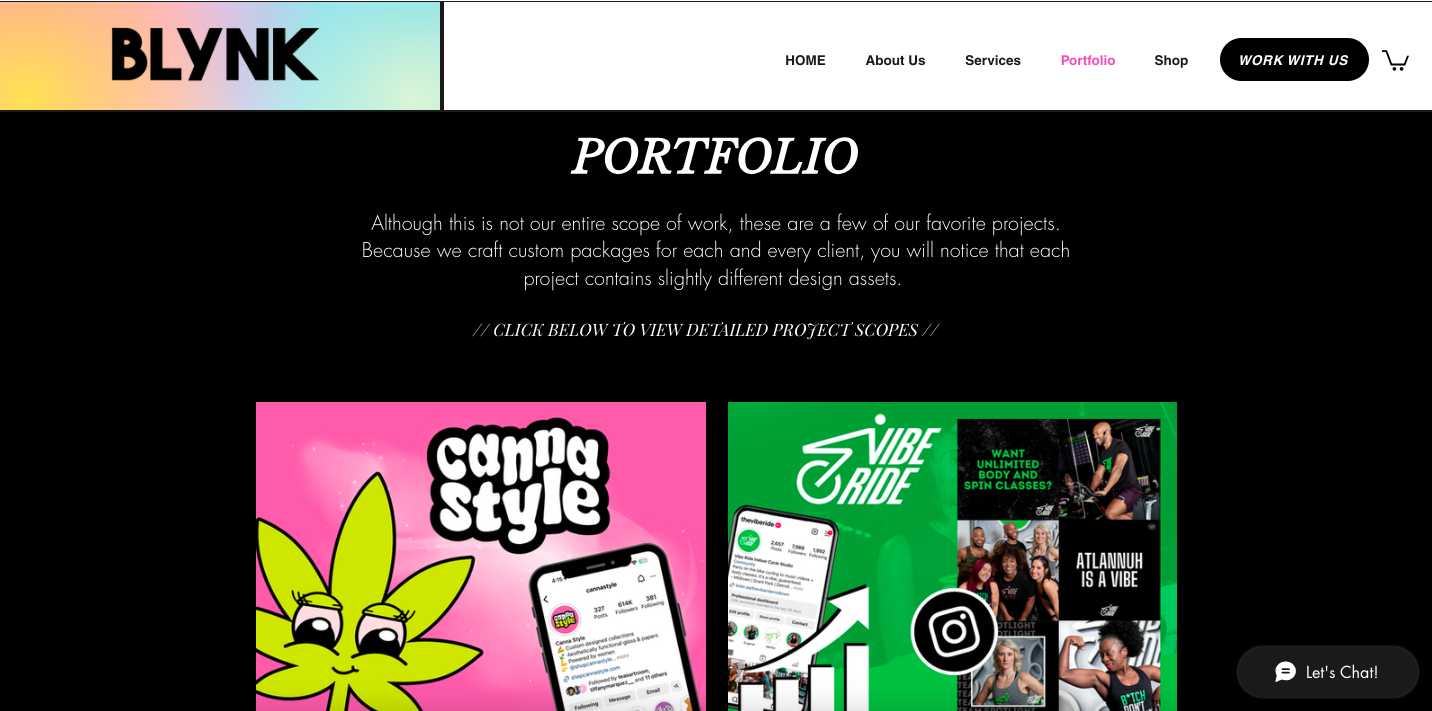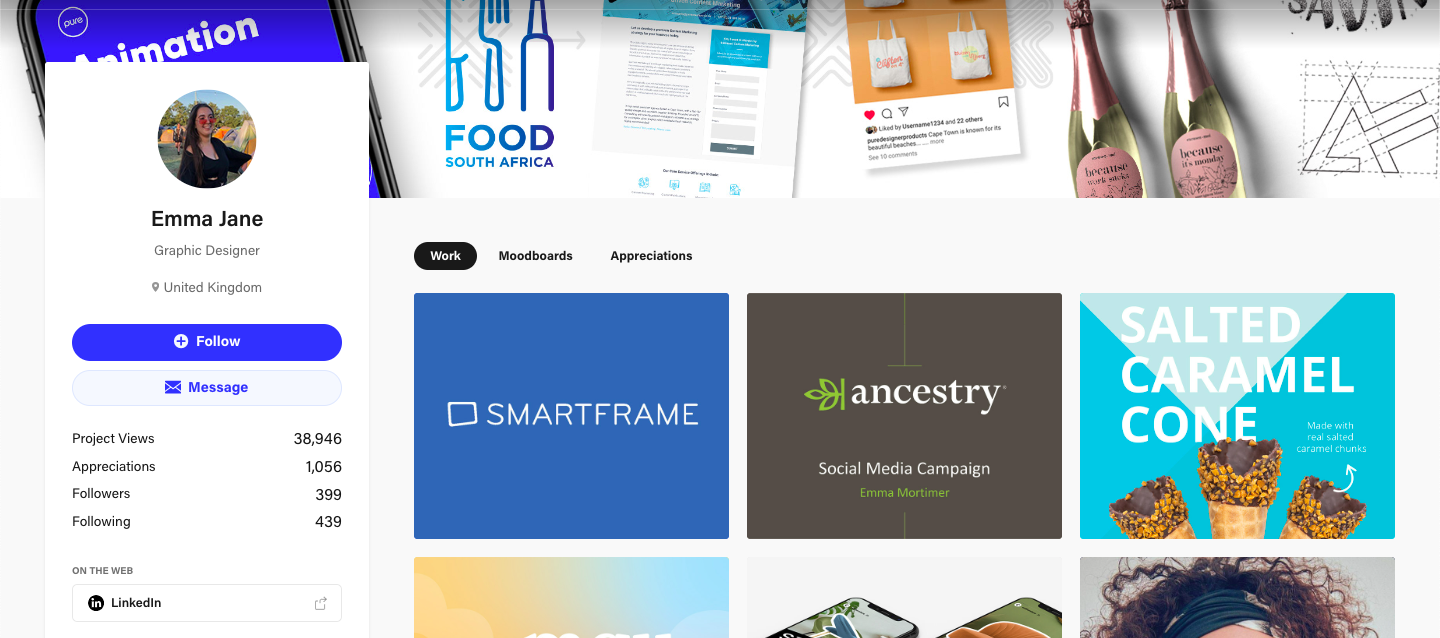A Guide to Crafting Your Winning Digital Marketing Portfolio
Proof might be in the pudding if you're a dessert chef, but for digital marketing agencies, proof is often in the portfolio. A digital marketing portfolio demonstrates your expertise, shows potential clients that you’ve worked in their niche before, and helps your target audience understand the value you offer.
What do hundreds of agencies from around the world say about the challenges they face and how to solve them? Download the insights report “Challenges agencies face” to find out.
While a digital portfolio should be comprehensive, it shouldn't be a disorganized collection of every campaign you've ever touched. Learn more about digital marketing portfolios below, including why you need one, what to include in one, and what strong examples of portfolios look like.
What is a digital marketing portfolio?
A digital marketing portfolio is a collection that demonstrates your agency’s and team’s ability to effectively provide marketing services. It typically includes examples of your work, such as infographics, blog posts and landing pages, or website designs. You might also include metrics and case studies that demonstrate your effectiveness with SEO, PPC ad management, and social media marketing.
For a digital agency startup without many existing clients, a portfolio might also include mockups or examples from marketing the agency itself.
Why you need a digital marketing portfolio
The best portfolios illustrate your capability while helping potential clients understand the value you can offer. Some reasons you need a strong portfolio include:
- Demonstrating expertise. Your portfolio provides proof that you can follow through successfully with the various marketing agency services you offer.
- Showing off your creativity. A strong marketing portfolio showcases all your agency skills, including the creativity of your teams in crafting unique campaigns and marketing content.
- Highlighting results. A comprehensive portfolio includes reports and metrics that prove you know how to find clients for various businesses, engage with target audiences, and drive conversions and revenue.
- Set yourself apart from the competition. Aim to support your unique value proposition as an agency with your portfolio.
Things you need in a digital marketing portfolio
While your portfolio for digital marketing should never look exactly like other agencies, some common types of marketing collateral are important to include.
Case studies
Case studies highlight the real-world successes that come from your digital marketing strategy and the services you provide to clients. When possible, include a variety of case studies in your portfolio to demonstrate your expertise and effectiveness with each type of service you offer or each niche you work in.
Image source: Vendasta
Try to ensure your case study strategy follow a template so clients can easily scan them. Include information such as:
- The problem. What challenges did your client face that you helped solve?
- The solution. Provide a basic summary of how you approached the challenge with the client.
- Metrics. Provide specific numbers to demonstrate your success.
- Quotes. When possible, include quotes and testimonials from the client.
Campaign results
Pair examples of your work, including ads, videos and images, and content, with results from those campaigns to show how well your lead generation strategies work.
For example, if you include blog posts in your portfolio, pair them with traffic metrics or search engine results to show that your content improves SEO performance. Or, if you include social media post examples, set those alongside engagement metrics to demonstrate that your efforts increase likes, shares, comments, and follows.
Certifications and skills
Round out your digital marketing agency portfolio by mentioning relevant certifications and skills your team holds. This can help you create an authoritative and expert agency brand identity.
Image source: Vendasta
How to build a digital marketing portfolio
While you can take numerous paths to building a portfolio for a digital marketing agency, there are some steps you need to—whether you want to start a digital marketing company or build a new portfolio for an existing business.
1. Select projects to include
Start by choosing which projects you want to include in your portfolio. A startup agency with only a few clients may want to include most of its existing work, but consider the best niches for marketing agencies and whether your portfolio is relevant to the niches you want to do business in.
Some questions to ask as you consider projects for your portfolio include:
- Does the project show off the best work your agency can do?
- Is it relevant to the type of client you want to work with?
- Does it illustrate the use of current skills and technology?
2. Organize content
Define categories and organizational structure for your portfolio. Potential clients don’t want to dig through dozens of examples to find what’s relevant to them. Provide options for sorting through your portfolio via easy-to-use menus and search functions.
Some potential ways to organize your portfolio include:
- By content type. Social media posts, blog and landing page content, and videos might belong to separate categories.
- By industry. Separate medical, legal, technical, and retail marketing campaigns.
- By client type. Make it easy for potential clients to see results for large businesses versus SMBs or nonprofits.
Ideally, clients may want to be able to sort through content in your portfolio by all these categories, so dynamic tagging and categorization work best.
3. Choose the right platform
Once you gather all the content for your online marketing portfolio and know how you want to organize it, choose a platform. This platform stores your portfolio content and allows potential clients to view it.
As an agency, you may already work with technology tools that give you a dashboard view of how your client campaigns and sites perform. Start with this vendor in your search for a portfolio provider.
Image source: Vendasta
If you don’t have a current vendor that can support portfolio needs, expand your search. Consider:
- Scale. Does the vendor support the amount of content you want to make available?
- Privacy. Some marketing agencies keep portfolios behind a login and provide potential clients with the password during the lead generation stage. If you want this level of privacy, consider whether a platform supports it.
- User experience. How easy is the platform for your clients and potential clients to use? Does it support the level of categorization you need?
Things to avoid in a digital marketing portfolio
Your digital marketing portfolio is more likely to highlight your marketing agency strategy positively when you engage in best practices when creating it. Here are some things to avoid as you build a marketing portfolio:
- Including outdated work. The digital marketing landscape changes constantly. Ensure your portfolio remains up-to-date and includes work that aligns with current client needs and SEO and content best practices.
- Only including irrelevant work. If everything in your portfolio is geared toward ecommerce, you might have a hard time persuading a medical firm that you can handle its marketing. Early in your agency's growth, you may have to mock up relevant samples for your portfolio before expanding into new industries.
- Using poor portfolio design. An ugly or hard-to-use portfolio doesn’t demonstrate your ability to create beautiful, user-friendly marketing content for clients. Put the same effort into your portfolio as you would a web design for a client.
- Not explaining items in your portfolio. You might think the images and content in your portfolio speak for themselves, but potential clients may not get the right message. Use captions and other tools to add a narrative to your portfolio.
- Emphasizing quantity over quality. It’s better to include a handful of high-quality, relevant samples than hundreds of mediocre and rushed jobs.
Digital marketing portfolio examples
When starting an agency with no experience or building a new marketing portfolio from scratch, it can be helpful to look at examples to understand what works well. Here are a few well-done marketing portfolios and what we like about each.
Sylvia Ogweng’s no-nonsense approach
Streamlined visuals make it easy to scan the pages of this portfolio, and the unique value prop is communicated immediately. Four simple service categories are explained succinctly above a list of projects you can view. Multiple CTAs make it easy for potential clients to take the next step if they like what they see.
Image source: Sylvia Ogweng
BLYNK Social’s visually colorful portfolio
BYNK ensures potential clients know its portfolio only highlights some favorite projects. It also makes use of vibrant colors and a variety of fonts, demonstrating its visual design expertise. You can quickly scroll through to select items to view based on the overall aesthetic as well as the category tags below the images. The main menu for BLYNK’s site remains in the top navigation to make it easy for users to move to service pages or contact BLYNK.
Image Source: BLYNK Social
Emma Jane’s graphic design portfolio
This portfolio is a great example of what a boutique agency or startup can do with a portfolio platform. The social media-style layout is intuitive and promotes engagement, and it’s easy to scan through the various work types to view Emma Jane’s designs.
Image Source: Emma Jane, graphic designer on Behance



